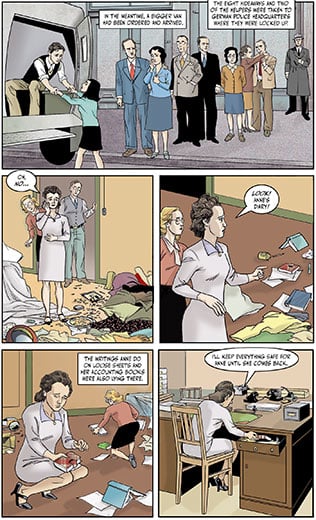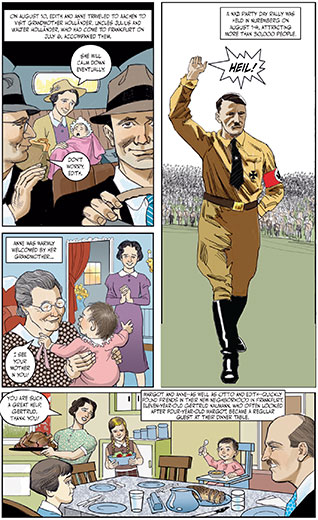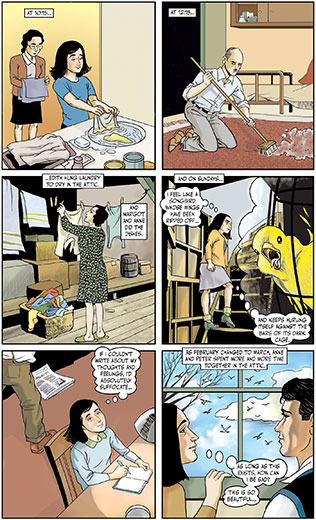
all photos courtesy of Smithsonian Magazine
When I was growing up, one of my most beloved books was a translation of Anne Frank‘s Diary. Then and now, the story of her life before her family went into hiding and what happened after they were betrayed evoked feelings that are impossible to describe. In 2007, my daughter Sarah and I visited the Anne Frank house in Amsterdam. If you are ever in Amsterdam, you must go … simply must.
Ernie Colón and Sid Jacobson, the duo behind The 9/11 Report: A Graphic Adaptation, again teamed together and accepted the “challenge of rendering the much-mythologized figure of Anne as a credible, real-life child and adolescent.” Their graphic novel was released in September 2010, but it is much more than just a graphic version of the book so many of us have read:
Two-thirds of the book takes place before or after the period Frank chronicled in her celebrated World War II diary, beginning with Anne’s parents’ lives before she was born. Their families had lived in Germany for centuries, and Anne’s father, Otto Frank, earned an Iron Cross as a German Army officer during World War I. Still, he was sufficiently alarmed by Hitler’s anti-Jewish fervor to seek safe haven for his family in the Netherlands soon after the Nazis took power in 1933. The refuge proved illusory. In 1940 the country was invaded, and the book’s middle chapters focus on the Franks’ two-year captivity in the secret annex of 263 Prinsengracht in Amsterdam, the crux of Anne’s Diary of a Young Girl (which she herself titled Het Achterhius, or The House Behind).
Unlike the diary, the graphic biography includes the aftermath: the family’s betrayal by a secret informer, their arrest and deportation, and their ordeals in Auschwitz, where Anne’s mother died, and Bergen-Belsen, where the emaciated Anne and her sister Margot succumbed to typhus in March 1945, just weeks before the camp’s liberation by British soldiers. The sole survivor, Otto, soon returned to Amsterdam, where he was given Anne’s journal by Miep Gies, one of the courageous Dutch citizens who had befriended and sheltered the Franks. Gies had placed the book in her desk for safekeeping, hoping to return it to Anne someday.




